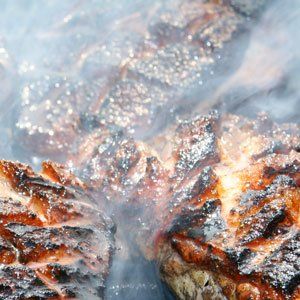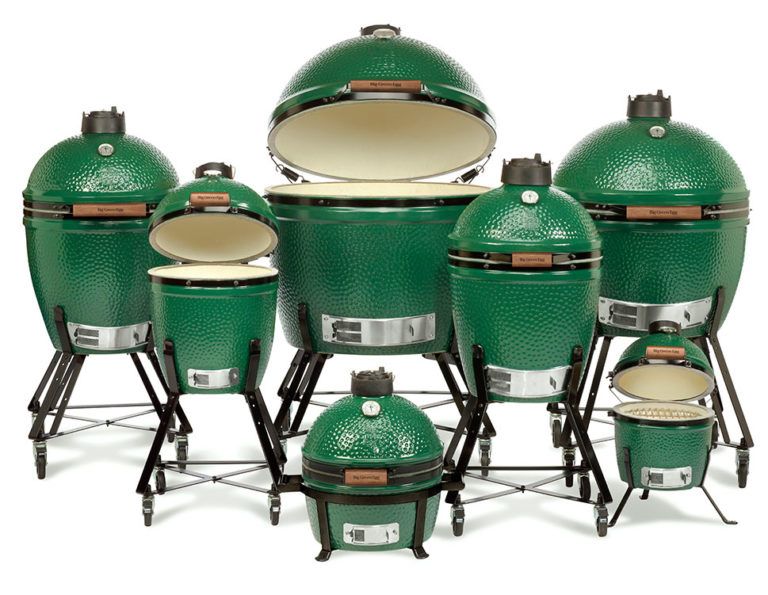 Summer is all around us. Foods get cooked outside, on a wide variety grills, BBQ, and sometimes just toasted over an open fire.
Summer is all around us. Foods get cooked outside, on a wide variety grills, BBQ, and sometimes just toasted over an open fire.
We all savour that woodsy taste and smell of food that has had a close relationship with an open flame. For example, an all-natural hot dog just tastes better right off a grill than boiled in a pot. The bun gets a crispiness and taste that just cannot be duplicated in an oven. The difference between and in-house-made hot dog and one made using a wood fire grill is night and day.
There have been a lot of theories about why food on an open fire seems magical. The one I like best is that it is literally genetically inbred to humans. From the time that man discovered fire, man cooked around a fire, so it is instinctive. Fire was protection, warmth, and meat cooked lasted longer. Boiling water, boiling grains, drying meat, the list goes on and on of the uses of fire.
Aromatic woods have been used to give specific flavour to foods for thousands of years. Here in the Pacific Northwest, salmon is cooked on a cedar plank.
There is – of course – the great Charcoal vs Gas grilling debate that many grilling experts foam at the mouth over. The convenience of grilling with gas is completely evident, especially if you are doing a lot of grilling. The clean up after charcoal is part of the mystique and charm of charcoal grilling. Gastronomically there is a great fire and charcoal taste imparted to food that gas ranges cannot match so I take the pro position that both are completely different.
So what should a modern kitchen have?
Great question and the modern guy in me tackles the problem head on. You start with an excellent gas BBQ, probably a Weber who have the total commitment to quality I like. Then you have a solid charcoal pan grill, well anchored with a serious metal base and it is hard to beat the Weber Kettle unless you go for (my choice) the Big Green Egg which is versatile as a smoker. Only because their look is cool and I happen to like green … here is the family of Big Green Eggs 🙂

They double as smokers and the smaller ones are AWESOME for making your own smoked meats, smoked salmon, etc.
Keep in mind that grilling, BBQ, and smoking food is almost a national religion in North America. Grillers and BBQers tend to get very, very opinionated when the subject rolls around to wood selection and even blends of woods to give the right smoke profile.
So let us start on the specific subject at hand: Burning aromatic woods to give a specific flavour profile to foods.
No surprise, the right wood with the right food has already been done so here is the chart below that is pretty accurate and a good start.

If you have the space in a garage, set up a few bins (that allow ventilation so the wood dries …) labelled with the type of wood and stock up. If you do not have a lot of space you can still get limited amounts of excellent, high quality wood chips from reputable sites.
Never use scrap wood. There is a lot of chemically treated wood out there and if you use it to smoke your food the taste is going to be bad! Natural wood free of bark is the way to go.
Here at Qualifirst the decision was made to recognize wood as a legitimate ingredient for fine food, used in smoking. The team did a great job identifying what makes a great wood chip for use in a smoker: Little resin except for what is inside the wood, no spores, no bark, cut / torn into pieces, and no fillers. Convenient size (1 Kg) in a recyclable plastic, resealable see-through pouch, check them out —».
Although saying that North America is ‘locally-sourced’ is a stretch, the point to be made is that shipping wood across the ocean for grilling is nuts, if only for the carbon footprint. Use woods from here, at least the same continent.
I love talking about carbon footprints when talking about grilling, smoking, and BBQing because it lends a sense of the absurd to the discussion and sometimes, to get that simply awesome smokey back-taste to food, a little absurdity is totally worth it.
Wood chips have to be soaked:
To get the maximum flavour out of the wood, 15 minutes is the absolute minimum. In the smoking I have done I soak overnight especially if using something besides water.
Yes, you can soak wood chips in ANYTHING before you drip dry them and put them in the smoking drawer or foil pouch in the grill. This article would be a mile long if I even tried to list the possible combinations but as a base think: Water, juice, wine, spirits, beer as starter ideas.
Keep in mind that if you soak your wood heavily in a high alcohol content liquid it is flammable when exposed to a flame. The idea is to imbue a taste, NOT make a variation of a Molotov Cocktail 🙁 Soak and drip dry is the way to go.
Generally speaking, fruit woods (like Cherry) impart a lighter smoke and nut woods (Oak, Hickory) give a heavier smoke. We are trying to source a good quality apple wood but the problem is consistency. The Ash is going to give you a solid wall of smokey flavour.
Hardwoods are the best bet for imparting specific flavour notes that are pleasant.
Although Elm and Eucalyptus are legitimate woods, they give weird smoke and are generally shunned for smoking, along with most high-resin woods. Softwoods such as Fir, Pine, Spruce, are conifers and not really suitable for grilling.
SO what is it in wood that imparts that smokey taste?
You have to look and understand what wood is made of to get the answer. Cellulose is a large molecule made of carbohydrates and sugars and is about 40% of wood. Another 40% of wood is made up of hemicelluloses, and the link to the actual definition for the Geeky (like me) will show you that hardwood hemicellulose is primarily Xylan, a polysaccharide. 19% is Lignin, a rigid and firm polymer. That last 1% is minerals.
Wood smolders in a low burn and the smoke is a dense mixture of complex molecules that ideally has a light blue tint.
Ready to start?
You have a mini smoker, you have soaked your oak chips in whiskey overnight, drip dried them a bit, put the chips in the smoking drawer and fired up the smoker to smoke some beef (a good combination by the way). The internet is full of recipes for smoked pork and beef so let us be a little different and go towards duck.
Smoked Duck:
Keep in mind that fat absorbs smoke better than meat, which is why smoked salmon is so awesome and pork is so smoke-friendly. Most people do not know that ducks and geese are (basically) flying pigs when it comes to fat content.
Remove the fat inside the duck and also around the neck, leaving the body fat on. Which wood to use? I have used Maple and the general consensus is fruit woods work best. I soaked the maple wood with water and maple syrup and drip-dried, into the smoker tray.
I brined the duck the day before. I used Kosher Salt the first time around but the second time I used Himalayan Pink salt (see my article on pink salts from a year ago) just to be different and liked the result. Salt the inside cavity of the duck. Using a sharp knife, nick the skin slightly all over the duck without slicing the actual meat. Set the temperature of your smoker to 250 degrees F (120 C) for a crispy skin for four hours. I baste with maple syrup regularly.
You have to use a pan to catch the fat from the bird … they are not called pigs of the sky for nothing.
The result is a great smoked duck.
The wood you use is the key to getting a clean smokey taste into the meat.
Chinese cuisine has an amazing variation: Smoking with Tea. You can get all of the ingredients from Qualifirst, of course. Once again, there are more variations of this recipe than you can imagine, but the basics are Tea, Rice, Sugar, and spice.
Smoked Salmon:
I smoke whole salmon with this variation:
1/4 of a cup of tea leaves
1/4 of a cup of rice
- 1/4 of a cup of sugar
- 6 drops of the natural Orange Oil
- 7 whole Star Anise
- 3 tablespoons of coarse chopped Ginger
It can be as simple as putting your salmon on a cedar plank in a low oven to cook, up to pro smoking where you measure the smoke density and rate of solid deposits on meats.
Vegetables are excellent candidates for smoking, being generally porous. In particular smoked tomatoes are heaven returned properly done. Smoking a batch of tomatoes in the summer then freezing them for use as an ingredient in winter for stews and soups is one of those genius ideas well worth trying the next time you have the BBQ on.
This article is light … very light … and is ONLY an introduction to the entire spectrum of what I like to call “Smokery” as a branch of cuisine. Enjoy!






